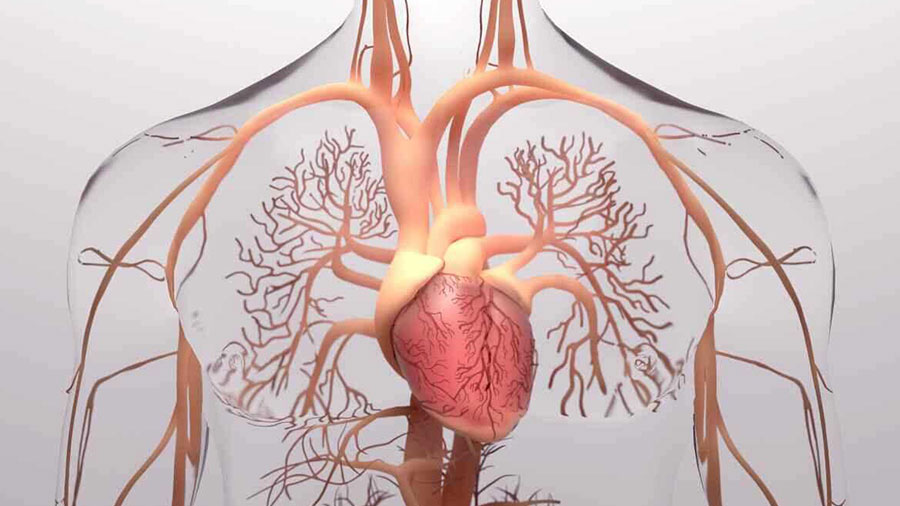
Aortic surgery refers to the medical field that involves surgical interventions to treat issues in the main artery, the aorta, which originates from the heart and supplies the body. These surgeries are typically associated with conditions such as aortic enlargement (aneurysm), aortic narrowing (coarctation), or aortic dissection. The goal of aortic surgery is to improve the overall health and quality of life of the patient and is a complex procedure performed by specialized surgeons.
Surgical interventions generally include methods such as open surgery or endovascular repair, depending on the patient’s condition. These surgical procedures are customized based on the patient’s anatomy and general health. Aortic surgery, combining advanced technology and surgical skills, provides successful outcomes for patients.
What is the Aorta?
The aorta is a large vessel that originates from the heart, carrying oxygen and nutrient-rich blood to the body. Emerging from the left ventricle of the heart, the aorta branches into smaller vessels that supply various parts of the body. However, in certain situations, weaknesses, enlargements, or tears may occur in the aortic wall.
Conditions Disrupting the Function of the Aortic Vessel
Various conditions exist that disrupt the function of the aortic vessel, typically involving diseases that affect the structural integrity of the aorta. Here are some conditions that disrupt the function of the aortic vessel:
Genetic Predispositions: Aortic vessel diseases may arise due to genetic factors. Individuals with a familial history may experience aortic diseases at a young age.
Heart Diseases: Aortic aneurysms and other aortic vessel diseases are more prevalent in individuals with existing heart conditions. Vascular hardening (atherosclerosis), in particular, can contribute to the development of these diseases.
Infections: Some infections can affect the aortic vessels, leading to functional impairments. For instance, syphilis and salmonella infections fall into this category.
Certain Inherited Diseases: Some congenital genetic diseases can lead to aortic vessel diseases. Examples include Marfan syndrome, Loeys-Dietz syndrome, Turner syndrome, among others.
Advanced Age: Aortic vessel diseases often develop with age. Such problems are more commonly observed in older individuals, typically around the ages of 60-70.
Diseases Treated in Aortic Surgery:
Thoracic Aortic Aneurysm:
A thoracic aortic aneurysm is an abnormal dilation that occurs in the chest cavity. It can be triggered by factors such as genetic predisposition, high blood pressure, and trauma. This condition can lead to chest pain, shortness of breath, and various other symptoms.
The treatment for thoracic aortic aneurysm typically involves surgical intervention. The surgeon removes the enlarged area and replaces it with an artificial vessel, restoring the normal function of the artery.
Abdominal Aortic Aneurysm:
An abdominal aortic aneurysm refers to the enlargement of the aorta in the abdominal region. Typically seen in elderly males, this condition may manifest with symptoms such as lower back pain, abdominal bloating, and discomfort in the groin area.
The treatment of abdominal aortic aneurysm may include surgical or endovascular methods, depending on the size of the aneurysm and the overall health of the patient. Surgery prevents the enlargement of the aneurysm, thereby avoiding serious complications.
Aortic Dissection:
Aortic dissection is the separation of layers in the aortic wall. This is a serious condition that can lead to sudden and severe chest pain, back pain, and fainting. Urgent surgical intervention is required.
The treatment of aortic dissection involves repairing the damaged area. The surgeon reconnects the separated layers, restoring the normal function of the vessel.
Treatment Methods in Aortic Surgery:
Open Surgery:
Open surgery is a preferred method, typically chosen for large aneurysms and complex situations. During the procedure, the damaged area is removed, and an artificial vessel (graft) is placed in its stead.
Open surgery allows the surgeon direct access to the artery, enabling detailed repair. This method is effective when the aneurysm is sizable or in cases of arterial rupture.
Endovascular Repair:
Endovascular repair aims to reinforce the aneurysm with stents placed inside the artery. This minimally invasive method may be preferred for smaller aneurysms, offering a shorter recovery period.
Endovascular repair is usually performed through a small incision in the groin. Stents, inserted into the artery through a catheter, help strengthen the aneurysm and maintain the normal function of the vessel.
Potential Risks and Complications in Aortic Surgery
- Bleeding or Infection: There is a risk of bleeding or infection during or after the surgery.
- Organ Damage: There is a possibility of damage to other organs during the surgery.
- Allergic Reactions: Allergic reactions to the materials used may occur.
- Anesthesia Complications: Complications related to anesthesia may arise due to the use of general anesthesia.
Aortic surgery provides patients with the opportunity for a healthy life while minimizing potential risks. These surgical interventions should be meticulously performed by expert surgeons, and the most suitable treatment method should be selected based on the individual patient. Leveraging the advantages of modern medicine, aortic surgery offers an effective solution to enhance the quality of life for patients.
November 21, 2023 9:13 pm

